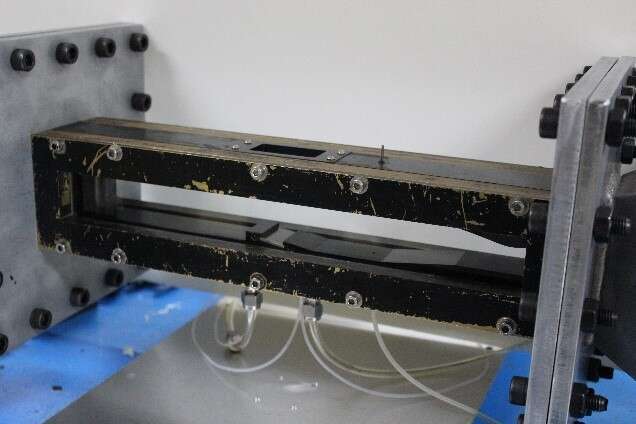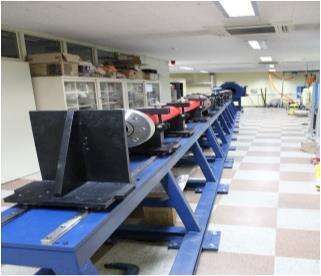Usually, the fore part of optical guidance missile generally composes of the body with a cone or hood shape and the optical window to seek a target. Additionally, a cooling system is necessary to reduce the surface temperature of optical window when a missile system is flying in hypersonic flow fields, because the aero-optical window of missile can undergo severe aerodynamic heating problems causing high heat and cracks to optical windows which eventually lead to failure of optical windows.
External jet film cooling and internal convection cooling can be adopted for optical window cooling. This study focused on the external jet cooling with planar optical side on a missile system, which is functioned using a cooling airflow injected from the front of the window and sprayed on the outside of the window. This method is simple and easy to implement, however, injected cooling gas and the external flow can be interacted and form a complex turbulence flow fields with shock-boundary interactions. These complex interactions will cause image transmission interference to the optical imaging detection system, which result in target image offset, jittering and fuzziness. This effect is known as the aero-optical effects. Therefore, it is necessary to apply a proper cooling system and to understand the aero-optical effects for operating the hypersonic missile.
In this study, the aero-optical effects induced by external jet cooling are investigated in supersonic and hypersonic flow fields. To observe the effects, the aero-optical test model with a simple wedge and an injection system was designed and installed in the supersonic wind tunnel and the hypersonic shock tunnel which are constructed in Aerospace Propulsion and Combustion Lab.(APCL) of Seoul National University(SNU) of Korea. The operating Mach number of supersonic wind tunnel and hypersonic shock tunnel of APCL are 2.5 and 7.0, respectively. Basically, the temperature distribution on the surface was measured using high-response co-axial thermocouples and Schlieren images were obtained using high-speed camera. To observe the aero-optical characteristics, Shack-Hartmann sensor was used to measure wavefront of a laser passing through the flow field. Phase and intensity measured through Shack-Hartmann sensor was transferred to PSF and aero-optical parameter such as Strehl ratio, bore sight error (BSE) and contained energy diameter (CED) was calculated. Finally, computational fluid dynamics analysis is also conducted to understand the characteristics of the complex flow-fields more clearly.

Figure 1. Supersonic windtunnel

Figure 2. Hypersonic shock tunnel

Figure 3. Aero-optics experiment result
References
Yang X. Y., Liu C. H., Gu Y. Q. (2004). Design of hypersonic vehicle infrared cooling dome. Infrared and Laser Engineering, vol. 33, no. 6:576-579.
Li C. C., Lin Y. C., Hsieh M. C., (2011). 3-D simulation of external cooling of aero-optical side window. FDTT: 214-218.
Neale K. H., L. Blosser M. L. (1992). Active cooling from the sixties to NASP. Current technology for thermal protection systems NASA CP

